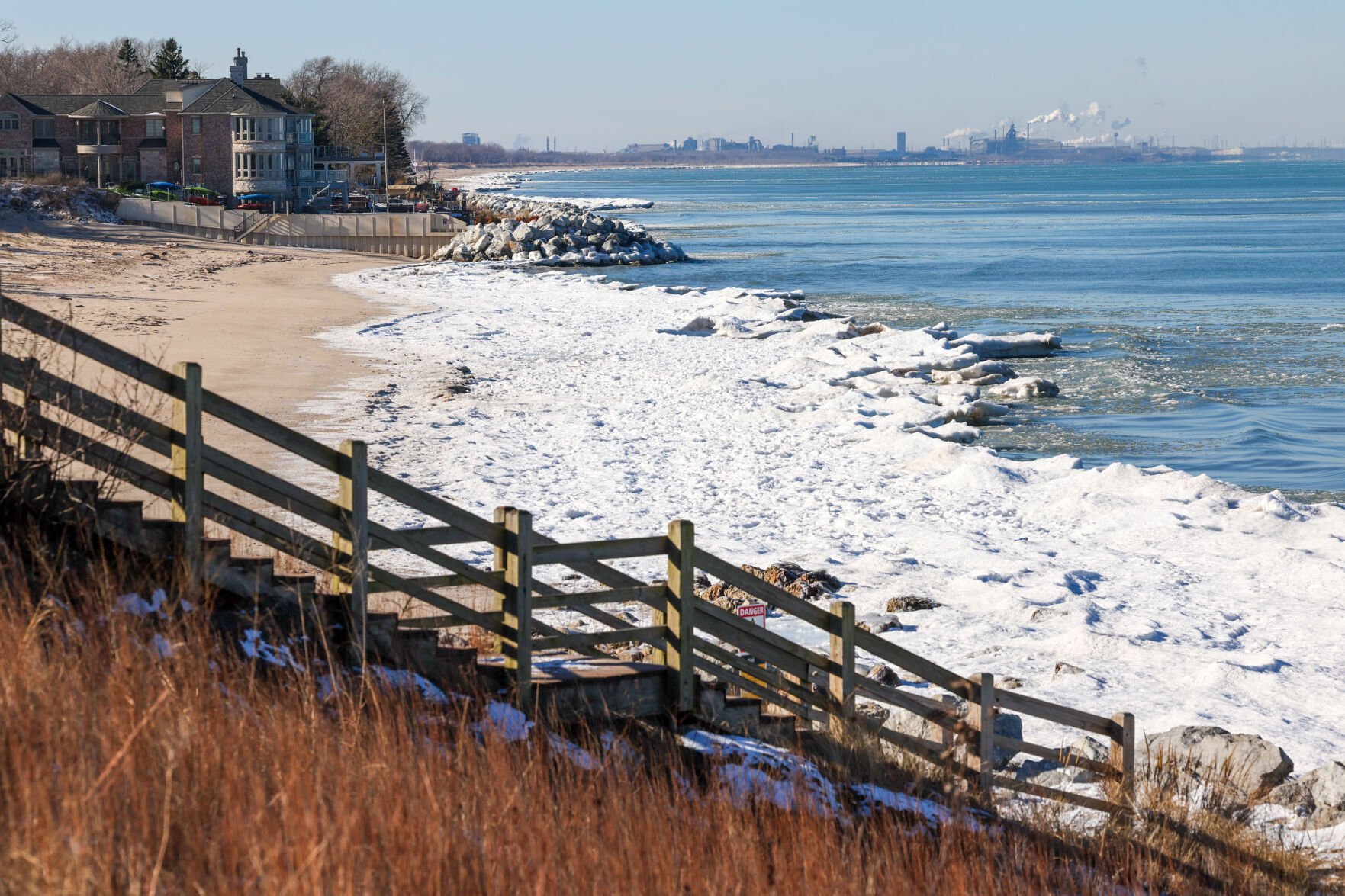As temperatures plunge, Lake Michigan’s shoreline transforms into an Arctic wonderland. But beneath the stunning ice formations lies a perilous landscape that experts warn could be deadly.
Shelf ice brings striking wintry sights to Lake Michigan but poses dangers

Key Takeaways:
- Shelf ice forms along Lake Michigan, creating stunning Arctic-like landscapes.
- Ice coverage is significantly below historic averages, signaling environmental changes.
- Shelf ice protects the shoreline from erosion but is dangerously unstable for walking.
- Experts warn of hidden hazards; thickness varies unpredictably across the ice.
- Authorities advise enjoying the views from a safe distance to ensure public safety.
The Alluring Beauty of Shelf Ice
As winter tightens its grip, the south shore of Lake Michigan undergoes a breathtaking transformation. The dropping temperatures give rise to shelf ice formations that blur the line between beach and lake, crafting an otherworldly, Arctic landscape that captivates photographers and sightseers alike.
“I don’t know how many people brave the cold to see shelf ice on a typical winter day, but it is popular with photographers,” said Michelle Senderhauf, Communications Director for Indiana Dunes Tourism. “It looks otherworldly—sometimes flat endless white ice along the shore, other times rows of volcano-like peaks.”
Ecological Significance
Beyond its visual appeal, shelf ice plays a vital role in preserving the shoreline. Acting as a natural barrier, it buffers the coast against harsh winter winds and waves, reducing erosion and protecting delicate ecosystems.
“Shelf ice does help protect our beaches and coastline,” Senderhauf noted. “During the winter, it bears the brunt of Lake Michigan’s waves.”
The importance of this natural shield is underscored by the record 3.1 million visitors who flocked to the Indiana Dunes National Park in 2021, drawn by its pristine beaches and unique landscapes.
Declining Ice Coverage and Climate Implications
However, the presence of shelf ice is becoming increasingly sporadic. On a recent Monday, only about 6.65% of Lake Michigan was covered by ice, a stark contrast to the historic average of 54%.
A study published in the academic journal Environmental Research Letters by researchers Eric J. Anderson, Brooke Tillotson, and Craig A. Stow revealed a troubling trend: “The Great Lakes are losing an average of 14 winter days per decade since 1995, resulting in fewer days of ice cover on Lake Michigan.”
The Hidden Perils of Shelf Ice
Despite its serene appearance, shelf ice harbors hidden dangers that can turn a winter outing into a life-threatening situation. Experts caution that the ice is not as solid as it appears, with unpredictable thickness and concealed voids.
“We always warn people of the danger of shelf ice whenever we talk about it. It is incredibly dangerous due to the hidden holes that form,” Senderhauf warned. “I’ve heard it described as a honeycomb-like structure.”
Dave Benjamin of the Great Lakes Surf Rescue Project echoed these concerns: “If someone were to walk out over this ice shelf, some spots may be two feet thick; some spots may be two inches thick. There’s no real way to tell until you fall through.”
Safety Warnings and Guidelines
Authorities are urging the public to admire the shelf ice from a safe distance, emphasizing that no ice on Lake Michigan is safe to walk on.
“Because of the danger, climbing or stepping onto shelf ice is prohibited,” stated Bruce Rowe, Supervisory Ranger at Indiana Dunes National Park. “Shelf ice is not a continuous sheet. Thinned or weakened areas may be hidden by snow, and the ice can collapse like a trapdoor leading to a plunge into icy Lake Michigan waters. Hypothermia begins in a matter of minutes. Wave action and fragile ice obstructs rescue. Death is likely.”
Mary Ann Pickford Best, a seasoned cold-water swimmer and founder of Blue Flow Great Lakes, advised: “Keep yourself, your children and your animals off of it. If you fall through, you will most likely be trapped under the ice and cannot be rescued or found.”
Conclusion
The shelf ice along Lake Michigan stands as a testament to nature’s awe-inspiring beauty and unforgiving power. As it continues to enchant onlookers with its Arctic charm, it’s essential to respect the inherent dangers it conceals. By appreciating this winter spectacle from a safe distance, visitors can ensure their safety while marveling at one of nature’s most captivating displays.











